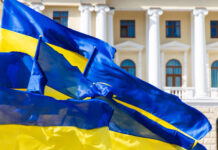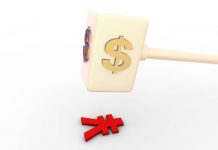Markets
No big hawkish surprises post-Fed as the Bank of Japan, Swiss National bank, the Norges Bank and the Bank of England announced their answers to arrest above-target inflation (for Norges Bank and SNB see infra). After a split vote, the BoE raised its policy rate by ‘only’ 50 bps to 2.25%. (5 votes for 50 bps, 3 votes for 75 bps, 1 vote for 25 bps). The BoE also gave the go-ahead to reduce the stock of government bond holdings by £80 bln over the next 12 months, both via maturing gits and gits sales. The MPC acknowledged that uncertainty on retail energy prices has fallen due to the Government Energy Price Guarantee. Inflation is now expected to peak at 11% in October, but will stay above 10% over the following few months before decreasing. At the same time, the government’s growth plan will support demand and will, all else equal, add to medium term inflationary pressures. The BoE will make a full assessment on the impact in November. Even as part of the market hoped for a 75 bps hike, the UK gilt yields are gaining 16/19 bps compared to yesterday’s close. Admittedly, part of this move was driven by the broader market trend. Markets apparently assume that the BOE will catch up with a 75 bps step in November when it has a more detailed view on fiscal support. After some nervous swings immediately after the policy announcement, EUR/GBP currently trades slightly higher near 0.8750. Cable this morning touched a new multi-year low at 1.1212, but rebounded on a broader USD correction. (currently 1.126).
The established uptrend in yields continues post-Fed. Both the US 2-y (4.125%) and the 2-y EMU swap yield (2.87% intraday top) hit new cycle peak levels. The move initially showed some hesitation maybe as the likes of the SNB, BOE and Norges Bank didn’t bring an hawkish surprise, but the uptrend resumed during US dealings. Currently US yields are rising between 11 bps (10-y) and 6.0 bps (2-y). Persistent low weekly US jobless claims reinforced the Fed case for further tightening. German yields are rising +10 bps (5-y) and 0.5 bps (30-y). On FX markets, several USD cross rates at the start this morning jumped to new cycle peak levels (intraday top for DXY at 111,81; for EUR/USD 0.9809, cable 1.1212; USD/JPY 145.9) supported by the Fed’s hawkish stance and a poor risk sentiment. However; a new sustained USD upleg was blocked (at least temporary) as the Japanese Ministry of Finance step into the market to prevent a further weaking of the yen. Intervention sales in the first place hit USD/JPY (currently 141.75), but also dented the momentum in other USD cross rates. EUR/USD currently trades near 0.985. DXY is changing hands near 111.1. We doubt that BOJ interventions will be a game changer, not for the yen nor for the USD trend overall.
News Headlines
The Norwegian central bank raised its policy rate as expected by 50 bps, from 1.75% to 2.25%. Governor Wolden Bache stressed the importance of frontloading to entrench inflation expectations around the 2% inflation target and in order not to tighten more further down the cycle. Based on the Committee’s current assessment of the outlook and the balance of risks, the policy rate will most likely be raised further in November. Projections in the updated Monetary policy report suggest a policy rate around 3% in the course of winter. Risks to the outlook are balanced, stretching from upward inflation risks to downside growth risks, stemming from the squeeze on finances. The Norwegian krone trades a tad weaker at 10.25, but remains within technical ranges.
The Swiss National Bank raised its policy rate as forecast by 75 bps, from -0.25% to 0.75%. The SNB doesn’t rule out further increases to ensure price stability over the medium term. Inflation rose to 3.5% in August and is likely to remain at an elevated level for the time being. The new forecast puts average annual inflation at 3% for 2022, 2.4% for 2023 and 1.7% for 2024. The stronger Swiss franc helps to tighten monetary conditions and dampen inflationary pressures, but the SNB keeps its potential FX intervention threat alive to provide appropriate monetary conditions. Markets clearly hoped for either a bigger hike or a removal of the intervention talk, pushing EUR/CHF from 0.9466 towards 0.97.













